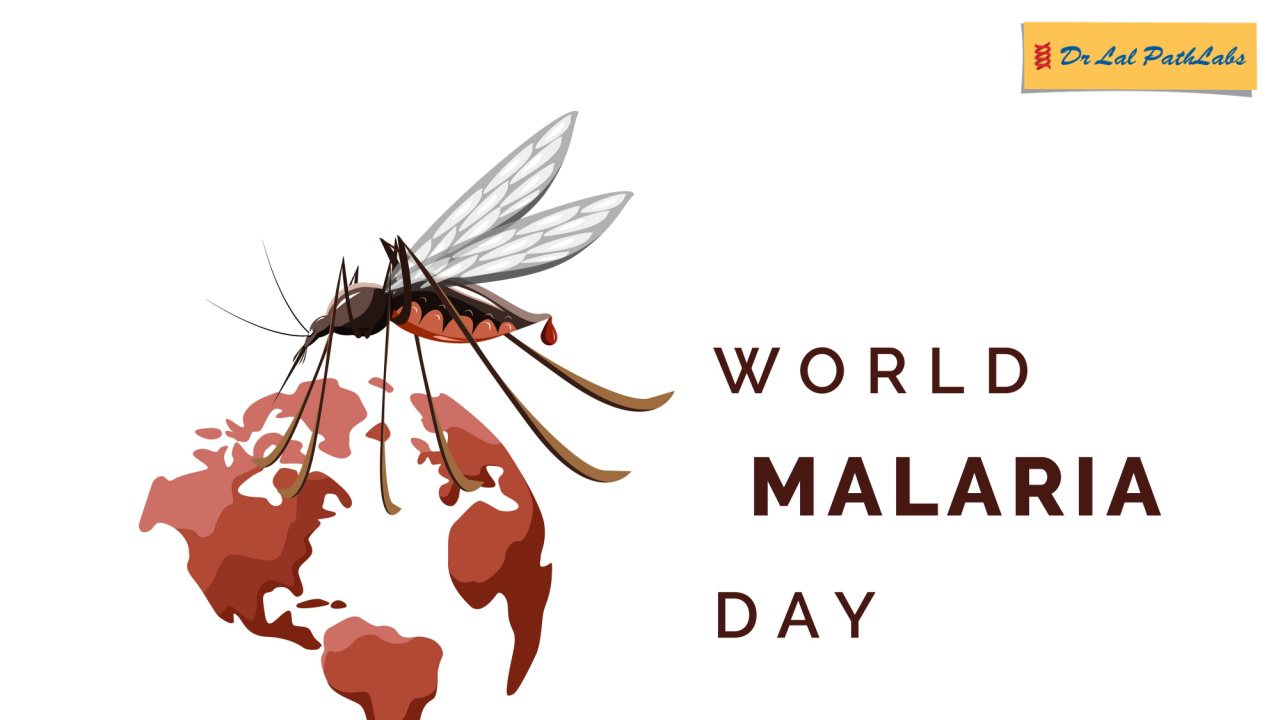Malaria: Causes, Symptoms, Types and Diagnosis
- 25 Apr, 2023
- Written by Team Dr Lal PathLabs
Medically Approved by Dr. Seema
Table of Contents
What is Malaria?
Malaria is caused by a parasite called Plasmodium, which is transmitted to humans through the bites of infected female Anopheles mosquitoes. There are several species of Plasmodium that can cause malaria in humans, with Plasmodium falciparum being the deadliest.

Malaria is a grave illness that is transmitted through the bite of a mosquito carrying tiny parasites. These parasites are introduced into the bloodstream of the bitten individual by the mosquito. Although the disease is uncommon in regions with a mild climate, malaria remains prevalent in tropical and subtropical nations.
Malaria poses a significant risk to human well-being globally and is a primary cause of sickness and mortality in several developing nations, especially among young children. Additionally, expectant mothers are at a higher risk of contracting the disease.
The World Health Organization has recommended a malaria vaccine for children residing in countries with a substantial incidence of malaria as a measure to lower malaria infections.
What are the Symptoms of Malaria?
Typically, malaria symptoms appear within a timeframe of 10 days to 4 weeks after the infection. However, in certain instances, symptoms may remain absent for numerous months. This is due to the ability of certain malaria-causing parasites to remain inactive within the body for extended periods.
Common malaria symptoms include:
- Shaking chills that can range from moderate to severe
- High fever
- Profuse sweating
- Headache
- Nausea
- Vomiting
- Abdominal pain
- Diarrhea
- Muscle pain
- Convulsions
- Coma
- Bloody stools
Cerebral malaria, the most critical form of the disease, can advance to a comatose state. It accounts for approximately 15% of fatalities in children and nearly 20% in adults.
What are the Different Types of Malaria Parasites?
Five species of Plasmodium (single-celled parasites) can infect humans and cause illness:
- Plasmodium falciparum (or P. falciparum): Plasmodium falciparum is a type of malaria parasite that is widespread in tropical and subtropical regions globally, with a higher prevalence in Africa. It is the most fatal form of malaria due to its rapid multiplication, leading to the bursting of red blood cells. These ruptured cells have the potential to block small blood vessels, including those in the brain, resulting in severe complications.
- Plasmodium malariae (or P. malariae): The incubation period for Plasmodium malariae is longer than the other species of Plasmodium. It can take up to a month or more for symptoms to appear after a mosquito carrying the parasite has bitten an individual.
- Plasmodium vivax (or P. vivax): Plasmodium vivax is mainly found in Asia, Latin America, and some regions of Africa. This malaria parasite has a latent phase in the liver, which means it can remain inactive for up to two years after the initial mosquito bite, causing a recurrent infection later on. Such delayed infections, also known as relapses, can reintroduce malaria to regions where it had been previously eradicated.
- Plasmodium ovale (or P. ovale): Plasmodium ovale is primarily found in Africa and the western Pacific islands. Similar to P. vivax, this parasite has the ability to remain inactive in the liver and can lead to relapses months or even years after the initial infection.
- Plasmodium knowlesi (or P. knowlesi): Plasmodium knowlesi is commonly found in macaque monkeys across Southeast Asia. However, this parasite can also infect humans and cause severe illness that progresses rapidly.
Falciparum malaria is a highly dangerous and life-threatening disease. Patients with severe falciparum malaria may suffer from liver and kidney failure, seizures, and even slip into a coma. Infections caused by P. vivax and P. ovale are generally less severe, but they can remain inactive in the liver for several months, resulting in the recurrence of symptoms months or even years later.
How is Malaria Transmitted?
In most cases, malaria is contracted through a bite from a female Anopheles mosquito carrying the infection. Anopheles mosquitoes are the only type that can transmit malaria, and they must have previously bitten an infected individual to become infected themselves. During the initial bite, the mosquito ingests a small amount of blood containing microscopic malaria parasites from the infected person. Approximately 1 week later, when the mosquito feeds again, the parasites mix with its saliva and are transmitted to the individual being bitten.
As the malaria parasite resides in the red blood cells of an infected person, it can also spread through blood transfusion, organ transplantation, or the use of needles or syringes that have been contaminated with blood. Additionally, malaria can be transmitted from a mother to her unborn child before or during childbirth, a condition known as “congenital” malaria.
How is Malaria Diagnosed?
When you meet with your doctor, they will evaluate your medical history, including any recent trips to tropical regions. Furthermore, they will conduct a physical examination, looking for signs of an enlarged liver or spleen. If you exhibit symptoms of malaria, your doctor may prescribe further malaria tests to affirm your diagnosis.
These tests will show:
- Whether you have malaria
- What type of malaria you have
- If your infection is caused by a parasite that’s resistant to certain types of drugs
- If the disease has caused anemia
- If the disease has affected your vital organs
How is Malaria Treated?
It is important to initiate early treatment of malaria before it progresses to a severe and life-threatening condition. The duration of malaria treatment depends on factors such as the type of malaria, the geographical location of the infection, the age of the patient, pregnancy status, and the severity of the illness.
Is malaria a contagious disease?
Malaria is not contagious and does not spread through person-to-person contact like the common cold or flu, nor is it a sexually transmitted disease. Malaria transmission occurs through the bites of infected mosquitoes, and casual contact with a person infected with malaria, such as sitting next to them, does not pose a risk of contracting the disease.
How is Malaria Prevented?
Before travelling to or residing temporarily in a malaria-endemic area, it is advisable to consult your healthcare provider regarding the use of medications to prevent malaria. These medications need to be taken before, during, and after your stay in the area.
You should also take precautions to avoid mosquito bites. To lower your chances of getting malaria, you should:
- Apply mosquito repellent to exposed skin.
- Drape mosquito netting over beds.
- Put screens on windows and doors.
- Treat clothing, mosquito nets, tents, sleeping bags and other fabrics with an insect repellent called permethrin.
- Wear long pants and long sleeves to cover your skin.
Disclaimer:
This blog is for informational purposes only and should not be construed as advice or as a substitute for consulting a physician. It is not a substitute for medical advice or treatment from a healthcare professional.














